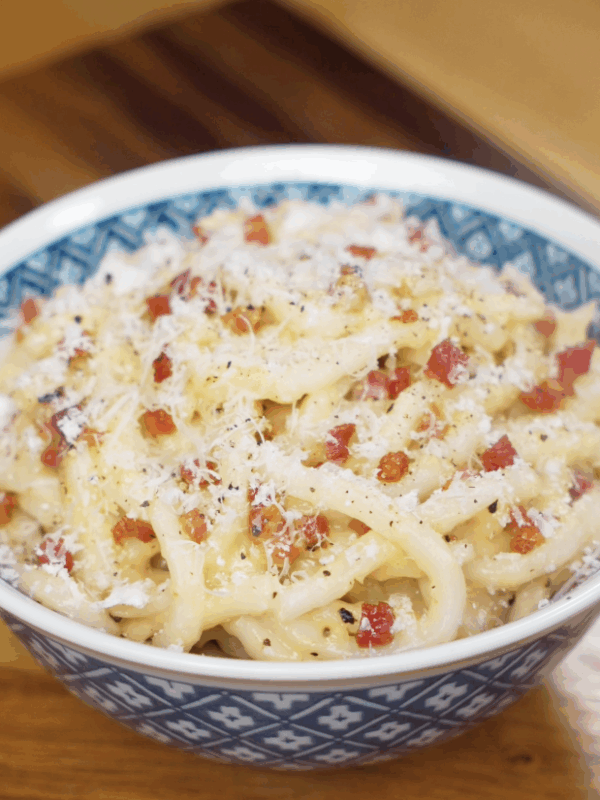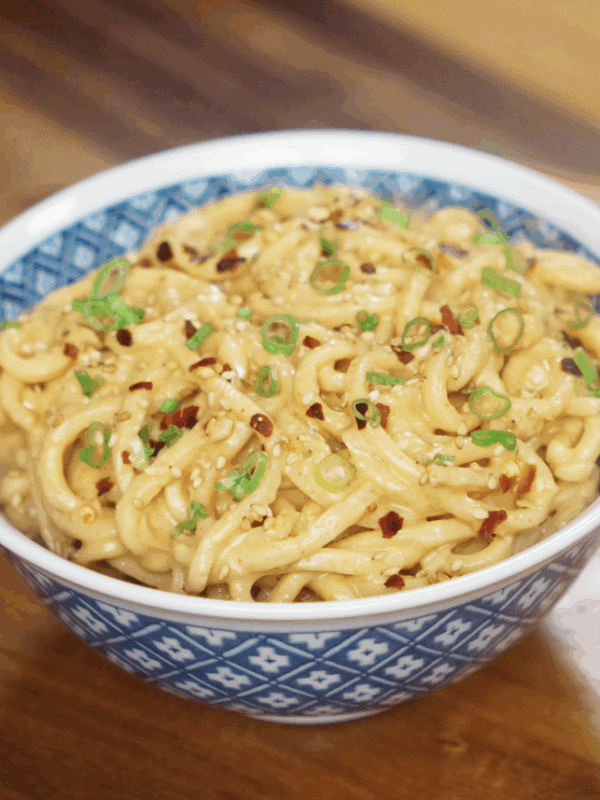Gochujang Carbonara
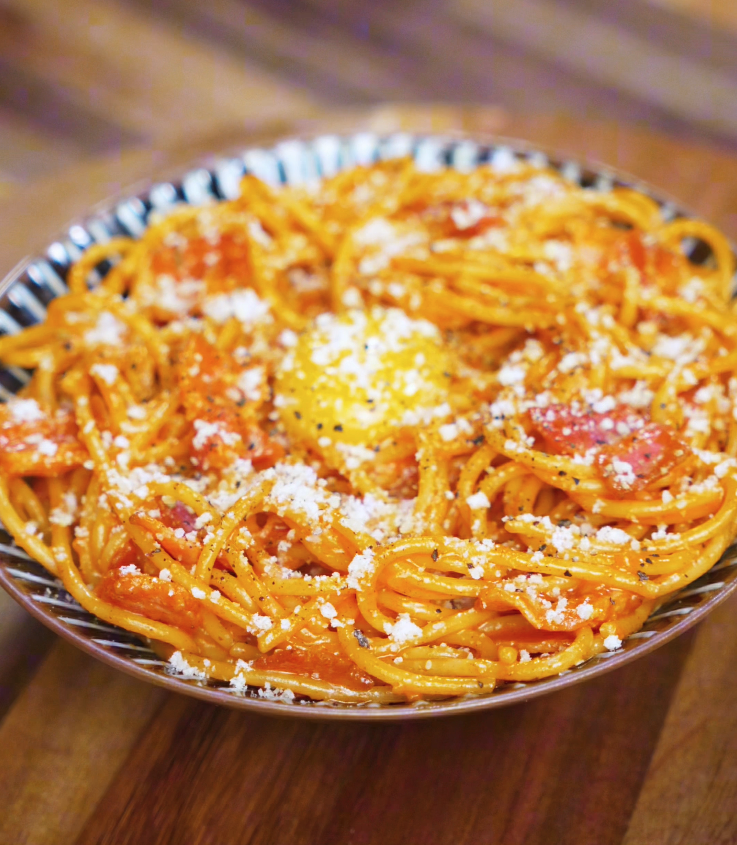
Equipment
Ingredients
Pasta & Sauce
- 6 oz pasta of your choice, I used spaghetti, but linguini is traditionally used.
- 3 slices thick-cut bacon, cut into thin strips, see note 1
- 2 egg yolks
- 1 tbsp gochujang
- 2 tbsp grated parmesan, plus more for garnish
- Salt and black pepper, to taste
- Reserved pasta water, ~ 2 tbsp
Optional Garnishes
- Extra egg yolk
- Parmesan
- Black Pepper
Instructions
- Cut the thick-cut bacon into thin slices. In a bowl, whisk together egg yolks, gochujang, parmesan, salt, and pepper until smooth.
- Heat a pan and cook the bacon over medium heat for about 5 minutes, or until crispy. Remove from the pan and set aside.
- Boil your noodles one minute before al dente. Reserve some pasta water before draining. Do not rinse the noodles.
- Add the noodles back to the warm pan (off the heat), toss in the carbonara sauce, and stir quickly to coat. Gradually add pasta water until the sauce becomes silky and smooth.
- Stir in the bacon, then plate your pasta. Optionally garnish with an extra egg yolk, parmesan, and a sprinkle of black pepper.
Notes
Nutrition
Nutrition information is automatically calculated, so should only be used as an approximation.
Why Gochujang Carbonara Is Better Than Regular Carbonara
I always find hosting dinner parties a little bit stressful because it sometimes takes a lot of effort, but this Gochujang Carbonara is one of those dishes that makes you look like a chef, but is honestly not that difficult to make. All it takes are some pantry ingredients, some egg yolks, and bacon. I like using gochujang for this because it helps cuts through the richness of a classic carbonara, but adds another layer of heat that keeps it from feeling too heavy, which ultimately helps you eat more of other dishes!
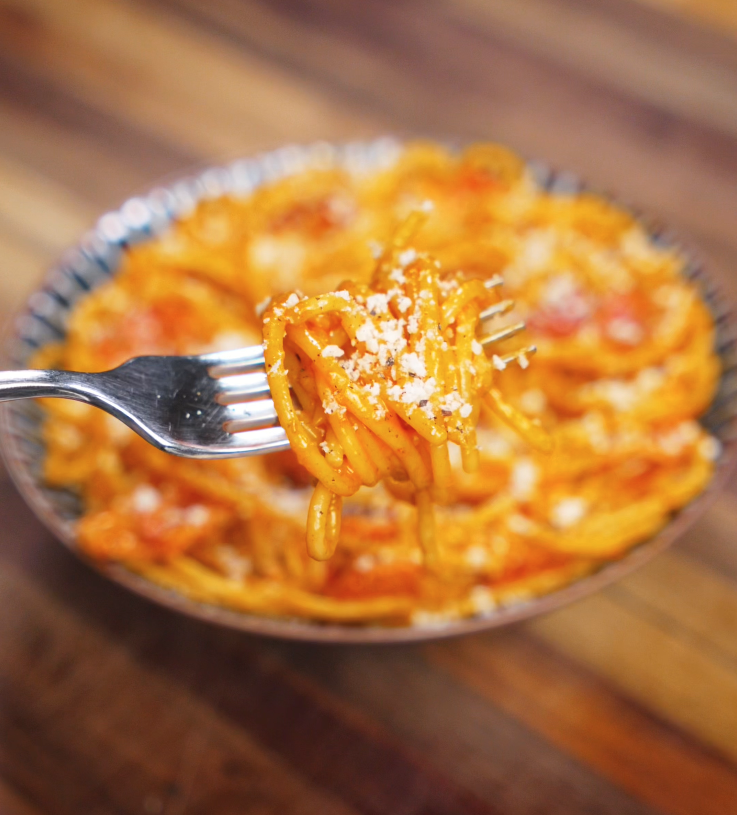
What Makes This Sauce So Good
I know some of you may think that this is just a carbonara with hot sauce, but I promise it’s more than that! The gochujang and bacon add savory and smoky notes, which help balance the richness of the classic egg yolks and parmesan. Additionally, the pasta water brings the sauce to another level of smoothness that clings to every noodle. Once you try this version, the regular version of carbonara starts to feel slightly less tasty (even though it’s already a 10/10 dish!).
Ingredients You’ll Need To Make Gochujang Carbonara
Pasta & Sauce:
- 6 oz pasta (spaghetti, linguine, or bucatini all work)
- 3 slices thick-cut bacon, sliced into thin strips
- 2 egg yolks
- 1 tbsp gochujang
- 2 tbsp grated parmesan (plus more for topping)
- Salt and black pepper, to taste
- Reserved pasta water, ~2 tbsp
Optional Garnishes:
- Extra egg yolk
- More parmesan
- Fresh cracked black pepper
How to Make Gochujang Carbonara
Slice your bacon and whisk together the egg yolks, gochujang, parmesan, salt, and pepper in a small bowl.
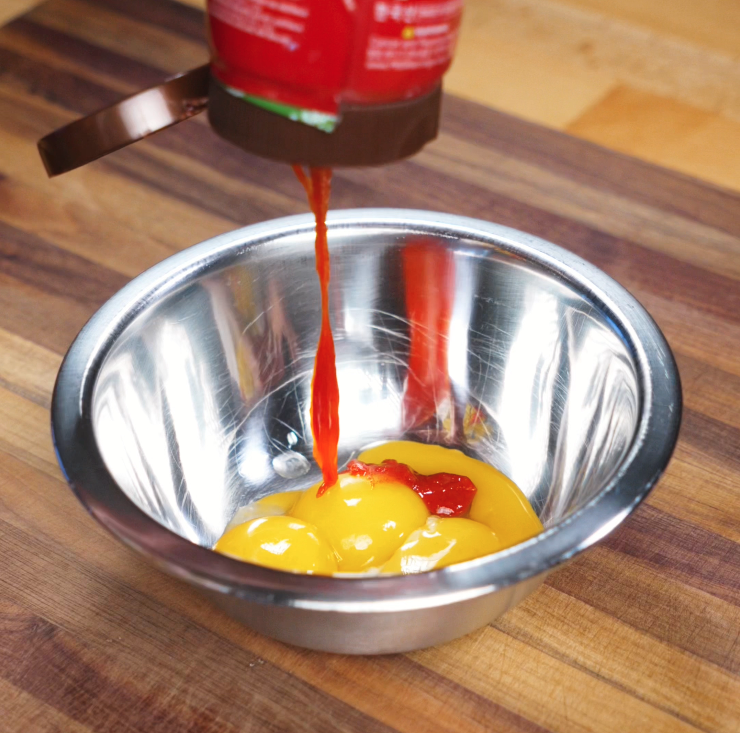
Boil your pasta one minute short of al dente. Reserve a few tablespoons of pasta water before draining.

In a pan, cook the bacon over medium heat until crispy, about 5 minutes. Remove and set aside.

Turn off the heat. Add the cooked noodles to the warm pan (off heat!), then pour in the egg mixture.

Stir quickly, using the residual heat to cook the yolk mixture gently. Add splashes of pasta water as needed to create a smooth, glossy sauce.
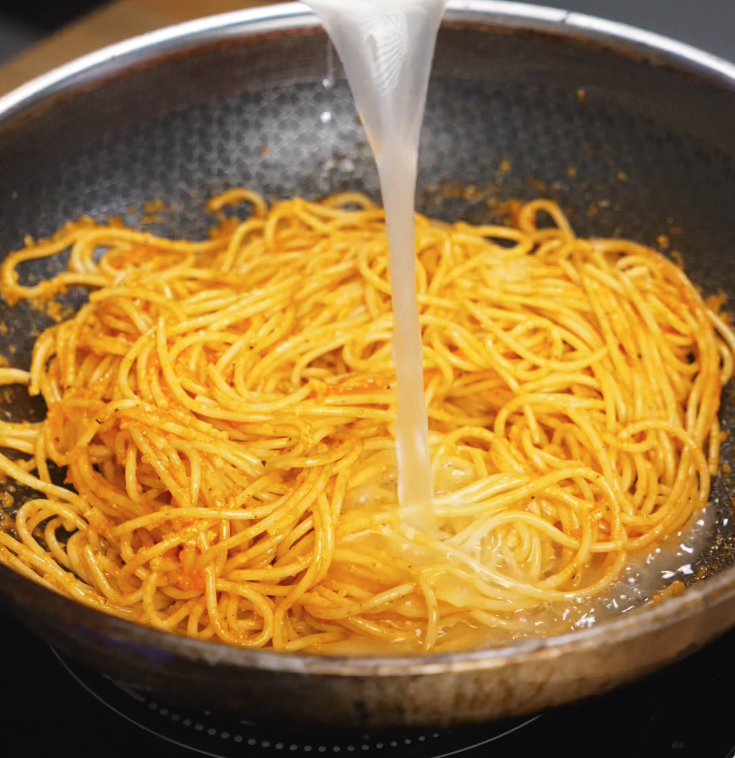
Fold in the bacon. Plate it up and top with extra parmesan, a cracked egg yolk, or more black pepper if you’re feeling it.
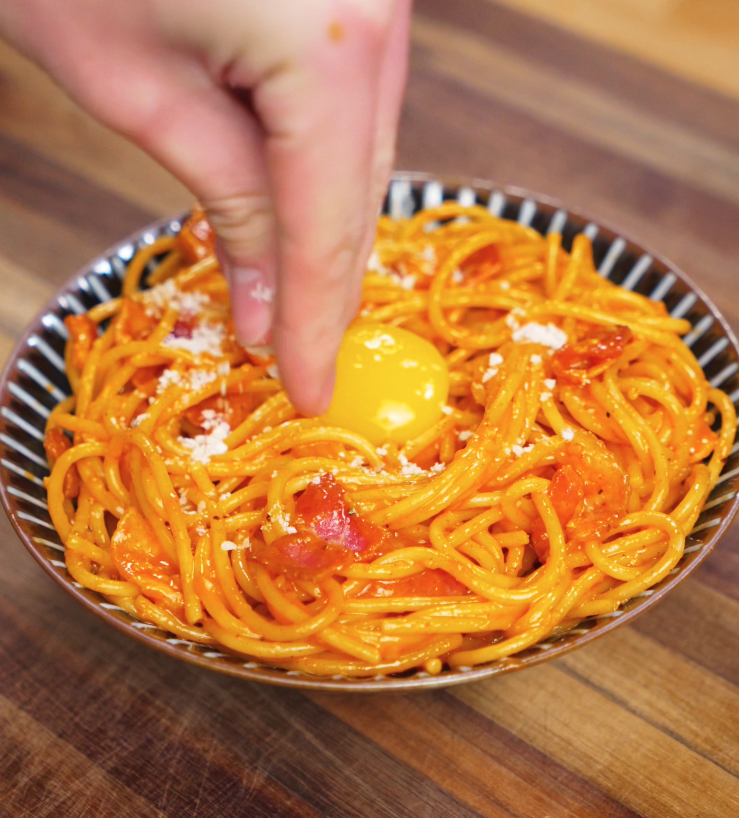
Tips & Variations
Use Room Temperature Yolks:
I highly recommend using room temperature egg yolks because they’ll blend more easily into the sauce and reduce the risk of scrambling.
Keep the Pan Off Heat:
This is the key to that creamy sauce in addition to the room temperature yolks. The residual heat is enough to cook the eggs without curdling.
Make It Spicier:
Add more gochujang or stir in chili flakes if you want even more spice! I personally like to use a tablespoon because I think that’s the perfect balance for me!
Try Other Cheeses:
No parmesan? I recommend using pecorino or even a sharp cheddar if you don’t want to go out and buy more.
Frequently Asked Questions
Can I use whole eggs instead of yolks?You can, but the sauce won’t be as rich as it is in any carbonara. Yolks give it the sauce that thicker texture. If you need the sauce to be thinner, that’s what the pasta water is for!
What’s the best pasta for this?
I love to use spaghetti noodles because they’re cheap and always in stock, but linguine, bucatini, or fettuccine work well too!
Can I meal prep this?
In my opinion it’s best fresh, but leftovers can be reheated gently with a splash of water or cream and mixing before. Heat on a super low heat to avoid scrambling the egg yolks.
Try These Next
- Want more fusion pasta? Try my Chili Oil Vodka Pasta!
- Craving more Korean food? I recommend my Spicy Pork Bulgogi.
- Looking for another effortless noodle dish? You’ll love my Garlic Butter Noodles!


